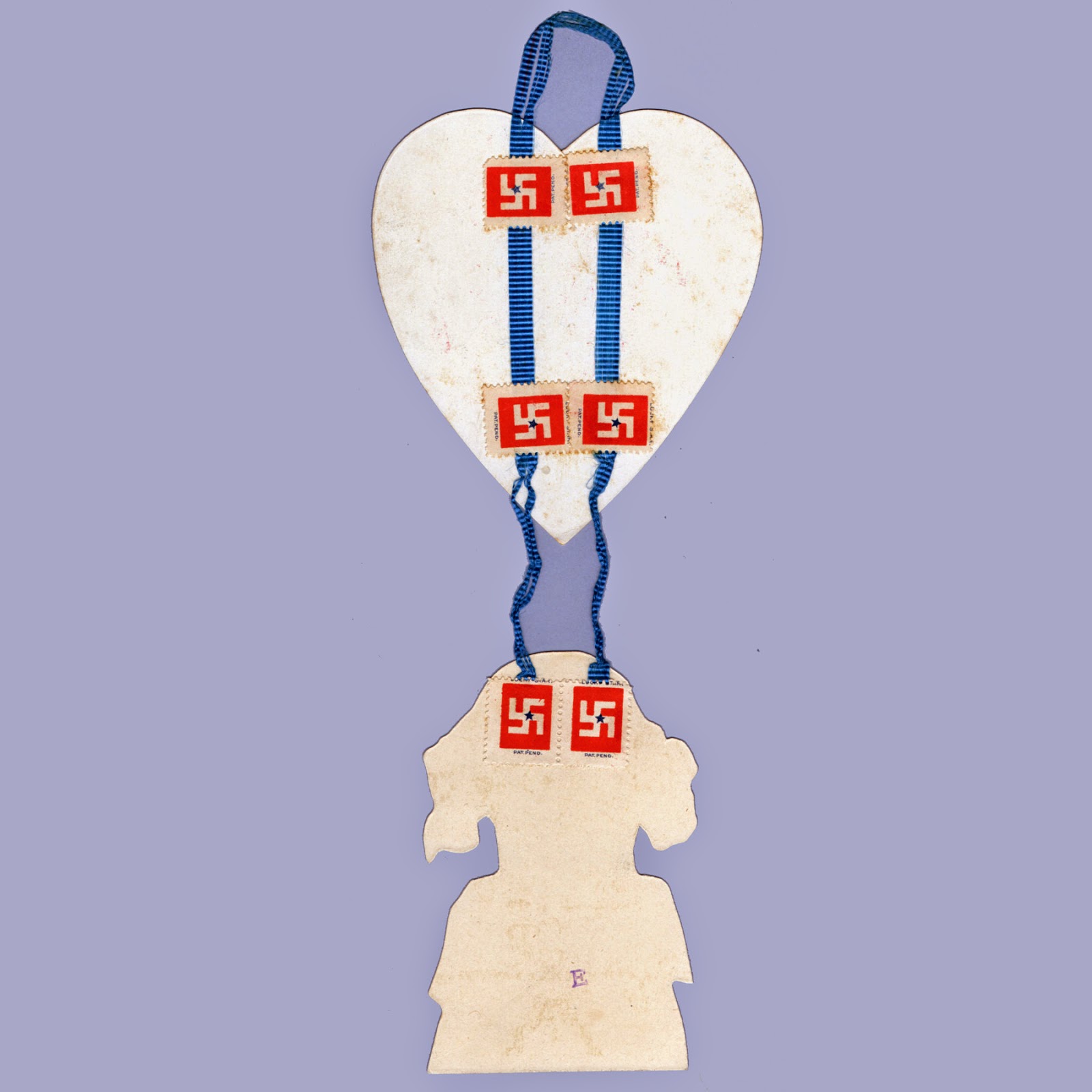Valentine's Greetings, Love's Joys, To My Valentine.
10 1/2" x 4"
circa 1910s
2-Piece Hanging Flat
'E' stamped in blue ink on the back of lower piece.
Ribbon secured with stamps bearing swastikas
marked 'Lucky Star Pat. Pend.'
circa 1910s
2-Piece Hanging Flat
'E' stamped in blue ink on the back of lower piece.
Ribbon secured with stamps bearing swastikas
marked 'Lucky Star Pat. Pend.'
Prior to the 1930s, the swastika was a symbol present in several different cultures with some variance in meaning, appearing in Asia, Europe and North America. It was greatly popular in the 1900s and 1910s, in the USA often found on New Year's cards and postcards as well as other paper goods and assorted commercial items. It was used as a symbol by the 45th Infantry division of the United States Army. There was flour sold under the Swastika brand as well as the symbol's appearance on several product logos and labels. This changed when the Nazi party, who had adapted it as their own in 1920, rose to prominence in the 1930s. The symbol's original meanings and past popularity still remain overwhelmed by this infamous association.
On valentine cards, its presence is rare, even on cards produced at the height of its popularity. This is the only card I currently have in my collection that bears this symbol. Here it appears on the card back, as an incidental symbol on the stickers used to adhere the ribbon to the cards.
On valentine cards, its presence is rare, even on cards produced at the height of its popularity. This is the only card I currently have in my collection that bears this symbol. Here it appears on the card back, as an incidental symbol on the stickers used to adhere the ribbon to the cards.


Tidak ada komentar:
Posting Komentar